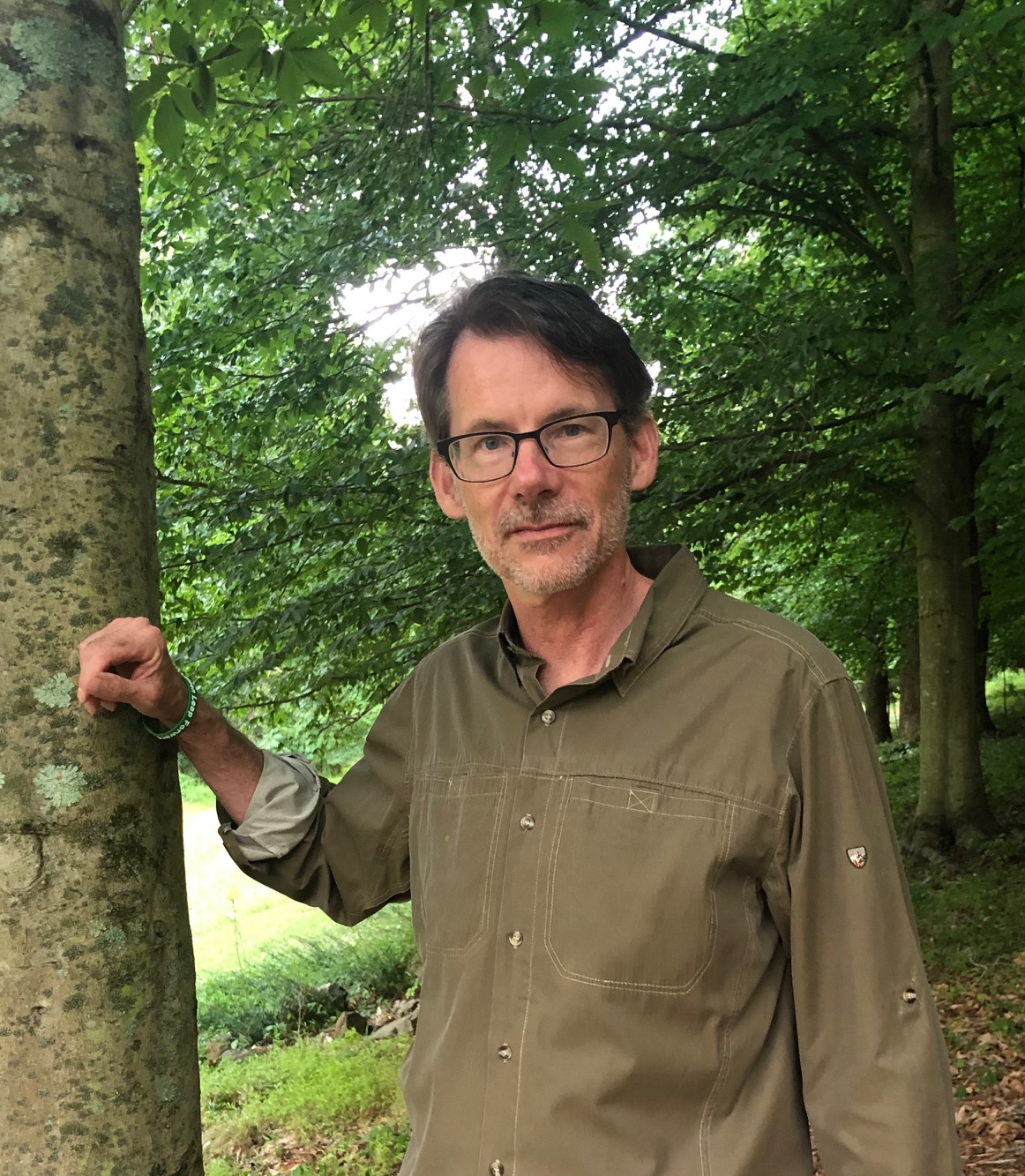Tim Dunn: Financial Climate Activist


By Gayil Nalls
Sign up for our monthly newsletter!
Tim Dunn knows what he’s fighting for. It’s the planet. When he left equity management, he decided to devote the rest of his life to addressing environmental threats and climate change. That eventually involved founding a unique company investing to solve problems. This month, Plantings caught up with Tim to talk about environmental issues and how companies can be successful and sustainable businesses in the 21st century.
Gayil Nalls: When did you found Terra Alpha Investments? What was the reason behind it?
Tim Dunn: We started the firm at the very end of 2014. It wasn’t something I thought through when I began my career 35 years ago, or 40 years ago, but it certainly all lined up after that. I had been an investment professional for decades, working in the mainstream and financial world managing money for millions of people at a big mutual fund company called American Funds Capital Group, and doing it well, but without thinking about the implications of how investing might affect things perceived as externalities such as the environment and society. Investment professionals were taught how to invest in companies that would make a lot of money and make their shareholders lots of money. And the analysis did not include how that might impact the environment or how they affected society, which was increasingly becoming problematic to me as I started to see the world as it really is versus how you might see it from an investor perspective. I left the investment world when I realized it was causing more harm than good by not considering those factors.
I spent about five years working with environmental organizations such as The Nature Conservancy, the Sierra Club, and the Carbon Disclosure Project (CDP), helping them improve how they talk to companies and investors about the environment. Too often, within thoughtful, smart, environmental organizations, the bulk of their interaction with companies is to say, “You’re polluting. You’re causing problems. You should stop.” That really isn’t a message that most people receive well, right? I mean, if someone you just met says, “You don’t look very good today. You should dress nicer,” I think most people would react negatively to that. Ultimately, companies do the same. If someone says they’re doing bad things, they become defensive.
I thought people should talk to companies by asking them if they understand the environmental impact they are having on the world. Saying, “Did you know you can be more efficient with how you use and impact the environment, and you’d be a better company, have a better reputation, and, ultimately, make more profits?” That’s a conversation companies listen to.
So, I spent about five years talking and working with environmental organizations, and thinking I was done with the capital markets. I concluded that I can only do so much to be so helpful to environmental organizations, which are mostly scientists and lawyers working very effectively in their field. Ultimately, I was an investor at heart. By practicing what I was preaching, which is investing in a way that was considering how a company impacted the environment, you could solve both the problem of the environment and you could also make companies more successful. You could make your investors very competitive returns.
So, you are a financial climate activist teaching corporations about corporate citizenship and about investing in their own sustainability.
That’s a great way of putting it. That’s not necessarily exactly how I would put it, but it seems pretty accurate. We do invest in companies, and we work with companies, both the ones we invest in, and beyond that. We help them be more aware, or as one of our advisors calls it, environmentally smart. We help them do a better job of reporting to their investors on how they’re affecting the environment. Then, investors can make better decisions about where they want to invest. We want to see systemic change and the only way you can make an environmentally smarter investment decision is if the company has done a sufficient job of measuring and reporting on how they impact natural resources. Not everyone has to take that into account. That’s their decision. But if you don’t have the information, you can’t consider it.
Your company is approved by Science-Based Targets. What does that mean?
I wouldn’t say approve. We have a validated science-based target from an organization, which is called the Science-Based Targets Initiative (SBTI), which was born out of several large environmental organizations, including the World Wildlife Federation, the World Resources Institute, the CDP, and the United Nations Global Compact. SBTI helps companies define what it means to align their business with the Paris Agreement, which talks about keeping global average temperatures at or below one and a half degrees centigrade above the pre-industrial levels of global temperatures. If you want to be validated by SBTI, you must agree to commit to having a science-based target that aligns your operations and your products with that global goal. Then, SBTI helps you assess whether you have credible targets to do that. In our case, as a financial firm, it really is largely about making sure our portfolio of companies is investing in themselves and that those companies are aligning with that same trajectory.
Then you’re asking all investors to only invest in companies that are part of the net zero initiative and who have made this commitment to Science-Based Targets.
We’re only investing that way because we think it’s right for our investors. I would encourage other investors and asset owners to do that if they agree with the basic premise that we need to mitigate the worst effects of climate change by preventing even higher levels of temperature change. I certainly think it’s in all our best long-term interest to do that and to consider many other environmental issues around reducing water usage and other environmental issues like soil and forest health and biodiversity.
We think it’s an opportunity for investors and to some degree a responsibility, because it is our dollars that are being invested that either will drive companies towards better solutions, or in some cases towards things that are less good for society and the environment.
You have said that how we consume, vote, advocate, and invest all matter. So how do you bring people around to what matters? What is the type of dialogue that you have with people to convince them that they must move in this direction?
I have a certain vision of what I think we want to see happen in the world, because of the challenge we face as a society with over 8 billion people already on this planet. The people on the planet today use and impact our natural resources at a much higher level than those systems can handle. We utilize the Global Footprint Network organization that tracks and calculates how much of our planet’s clean air, fresh water, and healthy soil we use every year versus what that system can regenerate every year because things do regenerate.
In recent years, around mid-August of each year, society has already consumed those resources we should use for the year. This year Earth Overshoot Day is August 2nd. After that, we’re borrowing natural resources from future generations. From my viewpoint, one of the most crucial things our society needs to recognize is that we’re living a very unsustainable lifestyle from a planetary system perspective. We’re creating these feedback loops (e.g. rising temperatures, changing rain patterns) that are continually becoming more and more prevalent.
If we want to continue to thrive on this planet with over 8 billion people, not to mention the 10 billion projected to be on this planet in the next 50 years, we must change a lot of things. Protecting our planet seems to be the best long-term option. We should all want our children’s and our grandchildren’s lives to be as fabulous as the lives we had. We need to think about how to change how we operate our economy so that it is sustainable and benefits all of us.
How do you do that? You can’t just do it by simply doing one thing. I’m going to recycle and make sure that recycling really is being recycled. I’m going to encourage my friends to do the same. I’m going to change the thermostat so I can use less energy. I’m going to vote on these issues for politicians that support moving to renewable power systems and building standards that are more energy efficient. I’m going to buy products from food companies that are more regenerative and sustainable. We should be doing all these things and more.
Each of our own investment portfolios is often the biggest lever we have. For many people, their investments have the biggest footprint of all the things they do in terms of their impact on the environment. So, thinking about how you’re investing and the impact it’s currently having versus what you would like it to have, is a really important lever that we all should be considering as we think about our everyday lives and how we can be part of the solution.
As you deal with companies or people for that matter, there are still those out there that are downplaying the serious effects of climate change that we are already experiencing. What are the big guns, facts, that you pull out to convince them that they need to evolve and adapt?
I think today, we all benefit from a huge growth in reporting about environmental factors, challenges, and crises that we’re all facing every day. I think there’s growing recognition and understanding of the challenges that are out there.
When we started in 2014, we didn’t even say climate change because it was considered such a charged term. We didn’t want to get into an argument about whether climate change was real or not. It was there, let’s just talk about the fact that there’s more pollution, air temperatures are changing, and there’s not enough water. Today, I think most people generally understand that something is happening to the planet and that temperatures or climates are changing and the data is very much clearer.
We really must get people thinking about some of the factoids about what is happening on our planet. When you get into the 100’s, airplanes don’t fly very well. It is just too hot for takeoff and landing, and fuel costs soar. We are facing those issues; we are seeing what’s happening with the data around heat storms and the fact that more people today in the United States are dying from excess heat than from tornadoes and hurricanes. That’s not in Bangladesh, that’s in the United States. This is new information that is very clearly affecting people in everyday life. It is also affecting things like crop production. Georgia’s peach harvest in 2023 was 5% of what it traditionally is because it didn’t get cold enough last winter, so the crops are failing. I think people relate to issues like not being able to find peaches. Why? It didn’t get cold enough last year. Climate change is real, and we’re seeing higher average temperatures, warmer winters in most places, and hotter summers. I think it’s increasingly that kind of data that helps people understand it more than saying how many parts per million of greenhouse gases are in the atmosphere. Yes, we’re at four and twenty parts per million. But that’s so abstract for most people. That is also a truism. There’s a lot of information in most newspapers. The New York Times has had strong climate and environmental reporting for a decade. The Washington Post has added a whole new section. I think there are a lot of resources people can go to that are very credible to get information.
In terms of pushing the world towards proactive behavior to address climate change, where do you think you and your company are having the most impact?
When we started, there were very few environmentally aware investment firms. There were a few traditional, socially responsible investment firms that were also often referred to as environmental, social, and governance (ESG) investing firms that had been around for decades and laid out a great approach to how they thought about investing, but it was very much to address legitimate concerns of investors who didn’t want to be investing in companies that were doing particularly bad things.
They were primarily asked to help identify companies that are doing the wrong thing. Whether it’s very highly polluting or maybe selling tobacco or firearms. That’s what those firms did. A lot of it was identifying and excluding bad behavior. I think, where we’ve seen a transition, and we have certainly been a part of this, is in recognizing that that only gets us so far. This is because you must think about where you are going to put your money and how that is an even more important thing for your own investing. Not investing in something just means you are not exposed to that but is unlikely to have real-world outcomes.
You’re investing in companies that are actually trying to do the right thing. I see that as an even more powerful tool for investing. I think that the first step is finding the companies and investing in them to signal that they’re doing a better thing, trying to help the environment, society, and their stakeholders do better. Stakeholder Capitalism is when companies take on responsibilities that extend beyond their shareholders to the environment, society, community, and their employees.
That’s step one. Step two is positively engaging with companies and making the case that if they do a better job of not just measuring and reporting but also managing their impacts on the environment, they will be rewarded by investors who are looking to invest thoughtfully. By those actions, they will support their business and be able to attract new investors as well as better employees and better customers. It’s a win-win for those companies all around. When we directly engage with the company, whether it’s the investor relations team, the sustainable operations team, or the senior management, we make the same argument that we’re making here, which is, investors are increasingly looking at how companies are impacting the environment.
If companies do accept that they have a responsibility for their stakeholders, then here’s what they should be doing in terms of lowering their impact, and how they should be reporting on it so that investors can consider it. If they are reporting it, then they are going to be thinking about how to manage those impacts because no one wants to report bad news, right? No one wants to say, “We polluted more this year than last year.” It doesn’t mean that it’s a perfect solution, because it’s really hard to actually grow a business and lower your environmental impact at the same time. But that’s the goal, right? Every company affects the environment badly, and all humans affect the environment by our very existence.
We just have to be thinking about how we impact the environment less. Having a voice in conversations with management teams, coming from a shareholder perspective about how they should be lowering their impacts, is a really powerful tool because companies listen to their shareholders. They listen to their customers and employees, too, but they listen to their shareholders perhaps more than other constituents because ultimately, the board of directors’ job is to represent the shareholders and decide on who the CEO of that company is. Depending on whether the shareholders are happy, that’s going to reflect on what happens to the CEO. The shareholders make a big difference.
This question is not just about your company, but your leadership in the broader area. If companies produced products and services that were sustainable, it would make it easier for everyone to live in a more and more sustainable way. A lot of companies could be producing sustainable things that are not. Companies are still just greenwashing and polluting, and most people don’t understand what can be done. How can individuals who are not shareholders have an impact? What do you think can be done about this?
It can feel almost overwhelming, right? Because it’s this huge economy, whether it’s multinationals, big companies, or much smaller local businesses. They are all trying to strike a balance in environmental impact, by reducing the use of virgin plastic, reducing the use of pesticides in agricultural supply chains, or improving the working conditions of employees.
It’s such a big complex system. These companies are all dependent on other companies, but they are also dependent on regulatory and economic situations in different countries. We all must recognize that, regardless of it being a big system, we have a role. That role is how we purchase, it’s how we engage with companies, it’s how we vote when they expect policy change. And, yes, it’s how we invest. So, as a consumer, those who can’t invest or don’t have access to much investment at all, like in a 401 K plan, have no real choice, and it is hard to use the investor lever for the individual.
We’re seeing that more and more companies recognize that there is a bigger opportunity than there used to be in terms of having products and services that enable their customer to help the transition to a more sustainable economy.
Adidas makes 450 million pairs of shoes a year. They started six years ago with a product line in collaboration with a company called Parley for the Oceans, which was sourcing recycled materials, particularly plastic out of the ocean. In the first year, Adidas made a million pairs of shoes using recycled plastic instead of virgin plastic and they sold every one of the shoes for $200 a pair, which is a little above average for Adidas shoes. The next year they made 5 million pairs and sold all 5 million. The next year they made 11 million and sold 11 million. They finally figured out that they were doing something right. They understood that there was a lot of demand for this, that people would buy this, and it helps their brand. They’ve now committed to having all their shoes be made primarily with recycled plastic. That’s a real change because it was driven by consumer demand. If Adidas made a million pairs and only sold 500,000, they wouldn’t have made 5 million the next year. It was purely driven by consumers saying, “I’ll pay a little extra for that shoe,” causing change at the corporate level.
Sustainable living is a victory for all life. Do you have any other victory stories in your pocket that you tell corporations to encourage them? Like the Adidas story but on a smaller scale.
Think about the fact that when we started in 2014, we led by stating that we believe that within 10 years, over half of the cars sold in the world would be electric vehicles. We may not quite be there, but it’s ramping towards that. By 2035, it could be about 70%. Most people thought that was crazy and thought the idea that you would have that level of growth of electric vehicles in this system would not be possible. Now we have companies like BMW. Last year, 12% of all the cars BMW sold globally were electric vehicles. Volvo is completely transitioning away from electric internal combustion engine cars to electric vehicles in the next five years. Billions of dollars are being invested in electric vehicle rollouts by all the major auto companies. That’s a huge victory.
The fact that solar power and wind power are lower-cost sources of power in almost every country in the world versus fossil fuel-based energy is a huge win. And that’s at scale. So, what we’re seeing isn’t hypothetical. As we transition to more sustainable energy systems for transportation systems, we can do it technologically, but the question is, can we do it fast enough? From a cost perspective, we can do it, but we still have some legacy challenges that are slowing down that progress. I think that’s what people should realize: it is no longer a, “Can we do this or how do we do this?” We know what to do, it’s just a matter of putting our dollars to work and prioritizing the investment into these new technologies.
There are a lot of companies that you could point to that are making transitions. I would say we’re still in the early innings. If you use baseball parlance for most companies who are trying to seriously transition to a more stable business, it is the first or second inning of a nine-inning game and the next couple of years are crucial. I would love to be able to give you 15 examples of data, such as significant commitments that one day will have a huge impact. I can point to a lot of individual products within companies, but I think that we don’t have enough of those at scale.
Do you see a path to total corporate sustainability in the United States?
Over the last 10 years, we saw the transition from climate denial to climate awareness, to climate action. However, recently we’re seeing a very unfortunate trend among some politicians to reverse the success we’re seeing around companies changing how they operate to think more about the environment because they see its real impact on their business and their customers.
There’s a lot of conversation in Washington D.C. and other state capitals around the country about legislation that would prevent, say, an investor from considering the environment as part of their investment decision analysis, or for state pension plans, insurers, or banks from considering the environment as part of their work as a risk factor. I think that’s completely counter to the idea that knowledge improves decision-making and that awareness of risks and opportunities in the economy and the world is a central component of capitalist markets.
Now, most of these efforts have not been successful. But that’s because there’s been some organized pushback to introduce facts into the conversation and have investment firms and banks say that they need “to have the ability to consider risk when we see it, and you shouldn’t blindfold us.”
What keeps you energized to do this work?
I was a Cold War kid living just outside of Washington D.C. I grew up in a time when we would all get under our wooden desks at elementary school, worrying about nuclear attacks. My attitude at the time was “This is really terrible; we should do something about it.” I thought I would grow up to be part of the nuclear arms treaty negotiations and solve the problems of nuclear weapons.
And of course, thankfully, before I got to that point, the Cold War kind of ended. I’ve always had this attitude of, “There’s a problem, what can I do to help solve it? I have a resume of successful investing, and I have an awareness. If I’m not willing to dedicate my time to this who is and what would I be? What else could I do with my life that would be more meaningful?” I have kids and I have a grandkid and another grandkid on the way. I think about them, and I just think that this is a fixable problem. We can all get to work and do our bit. And if I’m not doing my part, then what am I going to do with myself? It does help. My wife is a planetary geologist, so she’s very knowledgeable about the impact of planets and planetary systems. We share knowledge and I think we both just feel a real commitment to making a difference in the world.
Timothy Dunn is an environmentalist and the Founder and Chief Investment Officer at Terra Alpha Investments based in Washington, DC.
Gayil Nalls is an interdisciplinary artist and conservationist. She is the founder of World Sensorium / Conservancy and editor of its journal Plantings.

As Ireland transitions from the rich, smoky scent of peat-burning to a more sustainable future, its olfactory heritage is evolving. What will become the next iconic aromatic symbol of Ireland?
Click to watch the documentary trailer.








